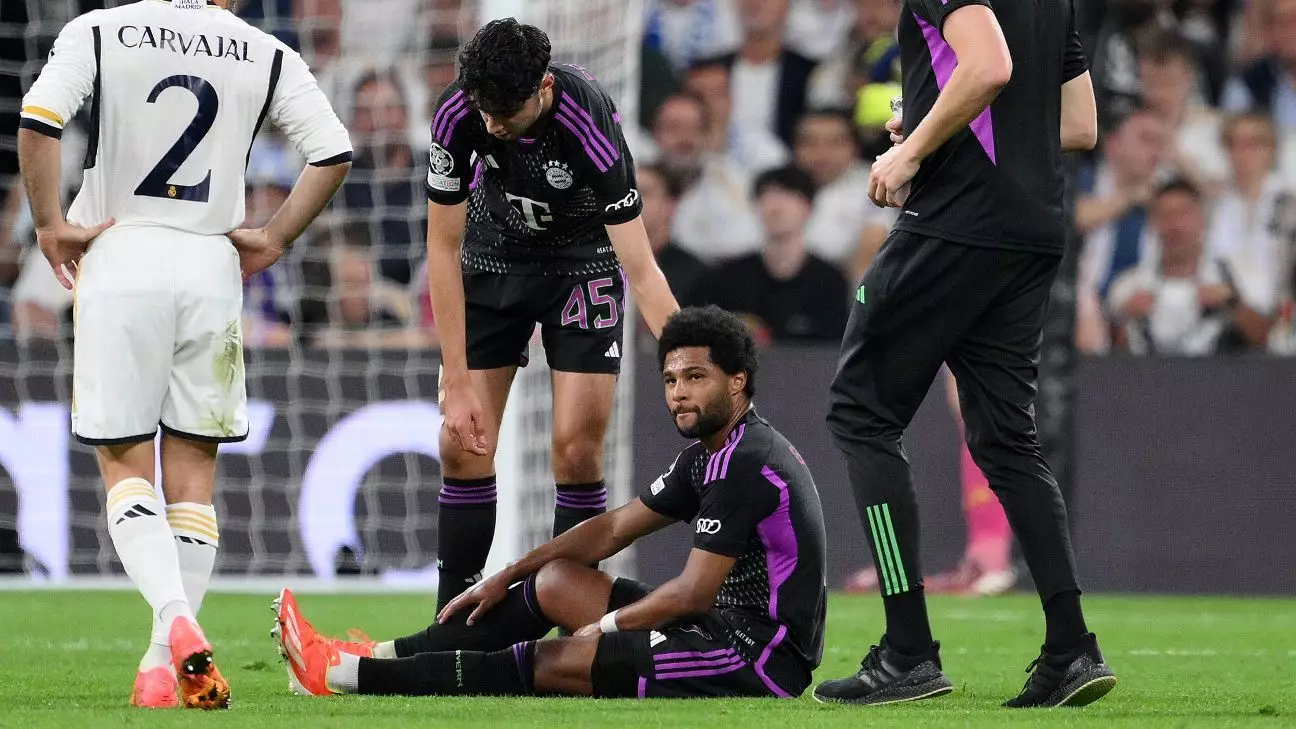In the fast-paced world of professional football, injuries are an unfortunate reality that teams must contend with. A recent report by insurance firm Howden highlights the troubling trends in injury rates across Europe’s top football leagues, particularly focusing on the Bundesliga and the Premier League. This analysis delves into not only the statistics but also the broader implications for player welfare, team performance, and the economic costs incurred by clubs.
The Howden Men’s European Football Injury Index has consistently revealed alarming trends, with the Bundesliga witnessing the highest injury rates among Europe’s elite leagues. During the 2023-24 season, German clubs recorded an injury every 52 minutes, underscoring a growing concern about the physical strain placed on players. Contrast this with the Premier League, where the frequency of injuries per match has become a significant economic liability, costing clubs a staggering €318 million in injured player wages last season alone. Ironically, while the total number of injuries in the Premier League decreased from 944 to 915, its financial burden remained the most significant across the five major leagues.
Despite the Premier League’s success being partially linked to its global popularity and revenue generation, the injury cost statistics reveal a paradoxical reality: a league that plays fewer matches per injury still bears a heavier financial load. In essence, while Bundesliga clubs face higher injury frequencies, English clubs are grappling with the concomitant financial fallout. This suggests a need for a re-evaluation of player health management practices and transparency in injury reporting across the leagues.
The total financial impact of injuries on clubs cannot be overstated. Across Europe’s top five leagues, the cumulative cost attributable to injuries for the 2022-23 season was a remarkable €732 million. This figure not only reflects the economic burden of player salaries during injury periods but also indirectly highlights the potential loss in competitive edge arising from reduced squad strength. The Howden report further emphasizes that since its inception in 2020, the cumulative financial toll due to injuries amounts to a staggering €2.3 billion, showcasing how prevalent injuries are changing the financial landscape of football.
The report also sheds light on the severity of injuries, particularly among younger players in the Premier League, where the average recovery time following an injury has ballooned from 26.5 days to 44 days within a single season. Such statistics underscore a concerning trend where younger, less experienced players face greater physical strains, leading to prolonged absences from action. This raises alarm bells regarding training overload and the adequacy of support structures in place for emerging talent.
With the dialogue surrounding player welfare gaining momentum, the implications of these injuries extend beyond financial concerns. Recent initiatives, including FIFA’s expanded Club World Cup and UEFA’s restructured club competitions, have only compounded the fixture congestion that players face. This has prompted calls from player unions like FIFPRO Europe for a more considerate approach to player workloads, with the threat of strike action looming over the calendar year.
James Burrows, the Head of Sport at Howden, has reiterated the link between increased competition and rising injury rates. The growing intensity of domestic and international fixtures creates an unsustainable environment for players, which has led to a paradigm shift in how clubs must manage their rosters now more than ever. As injury rates climb, clubs must invest in advanced sports science, rehabilitation resources, and preventive strategies that prioritize long-term player health over short-term gains.
As the landscape of European football evolves, so too does the complexity of managing player health and injury-related costs. Both the Bundesliga and Premier League must tackle these challenges with robust solutions that not only guard the well-being of their athletes but also safeguard the sport’s integrity and economic viability. This epidemic of injuries calls for a collective movement toward reform within football, reflecting a sport that genuinely values its players and their contributions.
